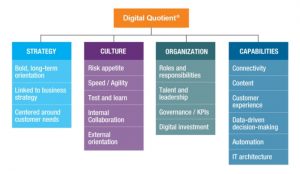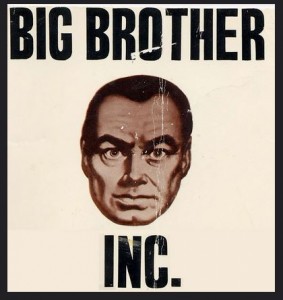Right now is the time to re-evaluate your marketing in terms of the new expectations your customers have developed in the past 6 months. What new insights are they providing regarding what they want–or do not want–from your customer experience, communications and company interactions?
Here are 3 key questions to ask right now. The answers will ensure that you take the smart actions for success in 2015.
1. Are You Ignoring Key Customer Segments?
You could be missing out on new business because of perceived brand positioning. Take stock at year-end to audit your overall brand message and determine whether it is moving you toward your full potential–or limiting your growth.
Case in point: Buffalo Wings & Rings, a chain of 55-plus sports restaurants in the U.S. and abroad, has spent the past couple of years refining its image and brand appeal to women and families in order to reach a larger universe of customers.
As part of that effort, the brand embarked on a total redesign of its locations. Specific changes included soundproofing the restaurant area to reduce noise from the bar, where sports events are broadcast; adding cushions to seats and benches for more comfort; and relocating games for children away from the front door and the bar area.
In addition, Buffalo Wings revamped it Web site to give customers the ability to interact, get information, and become part of a community. “We wanted to create a new experience for the sports and wings category… Your brand is created by customers and how they use you,” said Buffalo Wings chief executive Nader Masadeh. Added Diane Matheson, director of marketing, “[We] wanted to refine the brand and strengthen the concept with a distinct point of view.” Results: This year sales have grown 12.5 percent to $ 72 million. Next year, the company plans to add up to eight new stores in the U.S. and 10 overseas.
2. Are You Communicating Effectively?
Different types of customers have different preferences for communication. Just because you have a communication method available does not mean it’s the best option for your core customers. So pause now to challenge your assumptions regarding content, clarity of communications, sales channels, and preferred customer media. This will provide insights regarding key improvements for 2015.
Also, consider: Per Voice of Customer research conducted by our firm for client MassMutual, the majority of customers indicated that they want proactive and customized communications that are personalized by their needs and life stage.
Case in point: Multibillion-dollar telecom service provider CenturyLink needed to understand why its call centers were receiving such a high call volume. It discovered that its own processes required customers to call multiple times to establish or modify service. To solve this pain point, CenturyLink revamped its processes. It also developed a new system, called Digital Dialogue, to integrate more than 35 disparate systems from multiple communication channels, and transformed the CenturyLink Web site into a seamless self-service experience.
“We’re trying to give customers better information. … If we can give customers information before they have to ask for it, they feel that we’re having intelligent dialogue with them, and that we’re on top of things,” noted Lindsey Pardun, IT principal architect at CenturyLink. “And if we do need to talk to them, we can have a much more efficient conversation.”
Results: In the first two months after the launch of Digital Dialogue, 187,000 calls were automatically routed to the right agents.
3. Do You Have An Effective Retention Strategy?
A recent Retention Science study noted that only 23% of marketers track the rate at which customers churn, less than 40% track customer lifetime value, and, not surprisingly, 70% believe their retention marketing efforts are average, poor, or need improvement. In dollars and cents, an Adobe study found that online retailers would double their revenues if they retained 10% of their existing customers. Instead, 80% of marketers were using their digital marketing budgets to acquire new shoppers.
Case in point: Groupon realized that its initial business model of daily deals and a bombardment of email with heavy discounts did not turn out to be a sound strategy. To better retain customers and give them a reason to come back, the company had to rethink its relationship with both its business partners and end-user consumers.
Groupon is now focusing on its online marketplace, reducing reliance on email, and improving relevance. It encourages subscribers to search for deals and explore its marketplace (a pull strategy) instead of relying on email (push strategy).
The company is also creating a tablet-based operating system for merchants called Gnome, which empowers it to improve customer retention by better managing transactions, keeping track of customers to launch specific marketing campaigns, and simplifying the whole process of redemptions.
While the company is not out of the woods yet, its efforts are paying off. Groupon saw 23% revenue growth to $ 751.6 million in Q2 2014, with a 29% rise in global gross billings. The total active customer count rose by 25% year-on-year during the quarter, with North American customer count rising by 18%. The North American transactions percentage resulting from search was 24% in the third quarter, compared to 9% in the same quarter last year.
Takeaways: The needs and expectations of your customers are changing with astonishing velocity. Now is the time to:
- Investigate where your missing opportunities are hiding, and develop new strategies and methods of presenting your company to new customers.
- Understand whether your communication avenues are effective and make necessary changes to embrace customer needs and resolve pain points.
- Strengthen your customer-acquisition plan. Don’t rely solely on recruiting new business.
Use these final few weeks of the year to reflect on how much you don’t know about customers’ evolving needs and what you must change to maintain relevance and competitive differentiation. Use multiple methods to learn from the voice of your customer and then act on those insights. The wisdom of the customer is unfailingly correct.
Business & Finance Articles on Business 2 Community
(420)
Report Post




